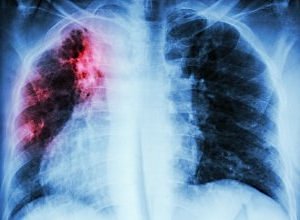Rates of tuberculosis (TB) recurrence increased by almost nine-fold between episode 2 and 5 regardless of HIV status, according to a study assessing recurrent tuberculosis in Cape Town, South Africa, over a 13-year period.
“TB disease among previously treated individuals (recurrent TB) constitutes 5% to 30% of the TB burden, with higher proportions found in high-prevalence settings. Recurrence may be due to endogenous relapse or exogenous reinfection,” Dr Sabine Hermans, assistant professor at Amsterdam Institute for Global Health and Development and the University of Amsterdam, and colleagues wrote. “Repeated recurrences in the same individual add to the TB burden, but the extent has not been quantified due to difficulties in identifying recurrence in routinely collected data because of lacking longitudinal patient registration systems.”
Hermans and colleagues at Desmond Tutu HIV Centre, Institute for Infectious Disease and Molecular Medicine, University of Cape Town determined the rate of recurrent TB per subsequent episode by matching individual treatment episodes in Cape Town which has one of the highest TB burdens worldwide between 2003 and 2016. The researchers then estimated the recurrence rate, stratified according to subsequent TB episode and HIV status, among patients with a first episode of TB who finished treatment successfully, adjusting person-time to background mortality according to age, sex and HIV status.
A total of 292,915 TB episodes among 263,848 individuals were included in the study. Results showed that the rate of recurrent TB was 16.4 per 1,000 person-years (95% CI, 16.2-16.6) and increased per subsequent episode by 8.4-fold, from 14.6 to 122.7 per 1,000 from episode 2 to episode 6, respectively. The researchers observed similar increases when results were stratified according to HIV status. Rates among people living with HIV were higher than those of individuals without HIV for episodes 2 and 3 (2 and 1.5-fold higher, respectively) and the same thereafter.
“We found a high rate of TB disease recurrence increasing per subsequent episode, which was independent of previous treatment outcome and HIV status. These findings suggest the HIV epidemic cannot fully explain the high burden of retreatment TB in Cape Town,” the authors wrote. “Therefore … high ART coverage will not be sufficient to curb it.”
Instead, Hermans and colleagues say that the burden “is more likely explained” by high transmission rates as well as an increased risk for infection or progression to disease associated with prior TB treatment. They also call for further research into the mechanisms underlying this correlation.
“The very high recurrence rates would justify increased TB surveillance of patients with more than one episode,” the researchers wrote.
Abstract
Background: Retreatment tuberculosis (TB) disease is common in high-prevalence settings. The risk of repeated episodes of recurrent TB is unknown. We calculated the rate of recurrent TB per subsequent episode by matching individual treatment episodes over a period of 13 years.
Methods: All recorded TB episodes in Cape Town between 2003-2016 were matched by probabilistic linkage of personal identifiers. Among individuals with a first episode notified in Cape Town and who completed their prior treatment successfully we estimated the recurrence rate stratified by subsequent episode and HIV status. We adjusted person-time to background mortality by age, sex and HIV status.
Results: A total of 292,915 TB episodes among 263,848 individuals were included. The rate of recurrent TB was 16.4 per 1000 person-years (95% CI, 16.2-16.6), and increased per subsequent episode (8.4-fold increase, from 14.6 to 122.7 per 1000 from episode 2 to 6, respectively). These increases were similar stratified by HIV status. Rates among HIV positives were higher than among HIV negatives for episodes 2 and 3 (2 and 1.5-fold higher, respectively), and the same thereafter.
Conclusions: TB recurrence rates were high and increased per subsequent episode, independent of HIV status. This suggests that HIV-infection is insufficient to explain the high burden of recurrence; it is more likely due to a high annual risk of infection combined with an increased risk of infection or progression to disease associated with a previous TB episode. The very high recurrence rates would justify increased TB surveillance of patients with more than one episode.
Authors
Sabine M Hermans, Nesbert Zinyakatira, Judy Caldwell, Frank G J Cobelens, Andrew Boulle, Robin Wood
[link url="http://tbonline.info/posts/2020/5/20/tb-recurrence-increases-nearly-ninefold-between-ep/"]Full TB Online report[/link]
[link url="https://academic.oup.com/cid/advance-article/doi/10.1093/cid/ciaa470/5825249"]Clinical Infectious Diseases abstract[/link]

